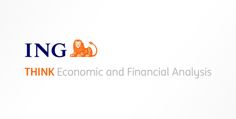Eos Energy stock falls after Fuzzy Panda issues short report
The Japanese yen could emerge as an outperformer as a hedge to the US entering a government shutdown tomorrow. Today, the focus is on data, though, with the JOLTS report watched closely after last month’s poor read, and also considering the chance payrolls figures will be delayed. Elsewhere, the RBA’s hawkish hold reinforces our bullish view on AUD.
USD: Lower USD/JPY Looks Attractive
The US dollar has suffered from rising risk of a US government shutdown and falling oil prices since the weekend, with the yen emerging as the top performer. President Trump said that a shutdown tomorrow is now likely after little progress on congressional negotiations.
A lower USD/JPY may well remain the favourite trade during the shutdown. It lost 1.5% during the 2018-19 shutdown, and is currently trading 1% above its short-term fair value, according to our model.
On the oil side, our commodities team has been highlighting downside risks for energy prices into year-end, and we continue to see that playing in favour of the yen and euro, and against the dollar and CAD.
Focus today will also shift back to US data, as the week of jobs data starts with the closely monitored JOLTS report for August. Remember, the July issue was bad, with job openings dropping and layoffs accelerating. Conference Board Consumer Confidence data for September is also out today: consensus is expecting a deterioration from 97.4 to 96.0. Fedspeak includes Bostic, Jefferson, Collins, and Goolsbee.
Today’s numbers can be quite impactful on the dollar, which now has a more balanced positioning and embeds a less pessimistic macro view compared to a couple of weeks ago. There is currently an 8bp gap between market pricing (42bp) for year-end and the Fed’s median Dot Plot projection, which, in our view, raises the bar for further hawkish repricing and lowers it for a revamp of dovish bets. This means downside risks for the dollar.
That said, we cannot ignore that US data momentum has improved, and our economics team sees room for an upside surprise in US payrolls, which are scheduled for release on Friday, but might be delayed due to the shutdown.
EUR: Eyes Back on 1.180
Oil prices declined yesterday following reports that OPEC+ is considering another supply increase. However, Brent’s inability to reclaim the $70 threshold underscores the market’s continued reluctance to fully price in geopolitical risk.
It is now clear that the bar for a material FX reaction due to geopolitics is high, and the short-term fate of EUR/USD is predominantly an extension of US macro. The only contribution to the eurozone-end this week will come from CPI data. France and Germany are releasing their preliminary September figures today.
An acceleration in headline readings is widely expected this month, and should keep the pressure off the ECB to review its current cautious stance anytime soon. On the margin, it should be positive for the euro.
The looming US government shutdown is raising some upside risks for EUR/USD, which may test 1.180 in the next couple of days. That said, we still think JPY remains a more attractive way to play the shutdown.
Also worth monitoring today is a central bank event in Helsinki, featuring speeches from several ECB members – including President Lagarde – alongside Riksbank Governor Thedéen and select Bank of England policymakers.
AUD: Hawkish RBA Hold To Help AUD
The Reserve Bank of Australia held rates unchanged and struck a moderately hawkish tone in the statement and press conference. Governor Michele Bullock reiterated increased concerns about price stickiness, despite admitting to monthly CPI volatility. The sturdy jobs market is also playing a role in the more hawkish assessment, in spite of non-negligible economic uncertainty.
Markets are now pricing in only 10bp of easing for the November meeting and 13bp by December. Our call remains that the RBA should cut again in the fourth quarter, but risks are now more balanced. Expect even higher short-term rates and AUD sensitivity to incoming inflation and the jobs market data.
AUD has been one of our favourite currencies in this RBA meeting, and we think it has some further room to run, also in the crosses against currencies that have unattractive domestic central bank stories (CAD, above all). On AUD/USD, we still target 0.68 in the fourth quarter.
Disclaimer: This publication has been prepared by ING solely for information purposes irrespective of a particular user’s means, financial situation or investment objectives. The information does not constitute investment recommendation, and nor is it investment, legal or tax advice or an offer or solicitation to purchase or sell any financial instrument. Read more
